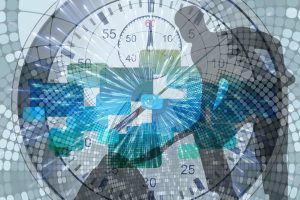11 Rhetorical Analysis
Andrew Gurevich

Rhetorical Analysis
In this chapter, we will examine what is often called “rhetorical analysis” in English Composition studies. In a sense, this is the culmination of everything we have been studying thus far. Through this analytical process, an analyst defines, classifies, analyzes, interprets, and evaluates a rhetorical artifact. Through this process a critic explores, by means of various rhetorical approaches, the manifested and latent meanings of a piece of rhetoric; thereby offering further insight into the field of rhetorical studies generally, and into an artifact or rhetor specifically. Such an analysis, for example, may reveal the particular motivations or ideologies of a rhetor, how they interpret the aspects of a rhetorical situation, or how cultural ideologies are manifested in an rhetorical artifact. It could also demonstrate how the constraints of a particular social context or situation shape the rhetoric that responds to it.
Rhetorical analysis/criticism analyzes the symbolic artifacts of discourse — the words, phrases, images, gestures, performances, texts, films, etc. that people use to communicate. Rhetorical analysis shows how the artifacts work, how well they work, and how the artifacts, as discourse, inform and instruct, entertain and arouse, and convince and persuade the audience. As such, this discourse includes the possibility of morally improving the reader, the viewer, and the listener. Rhetorical criticism studies and analyzes the purpose of the words, sights, and sounds that are the symbolic artifacts used for communications among people.
A rhetorical analysis considers all elements of the rhetorical situation–the audience, purpose, medium, and context–within which a communication was generated and delivered in order to make an argument about that communication. A strong rhetorical analysis will not only describe and analyze the “text,” but will also evaluate it. This curated and careful evaluation represents your own argument in response to the rhetorical stimuli. The rhetorical situation identifies the relationship among the elements of any communication–audience, author, purpose, medium, context, and content. The time, place, and occasion surrounding the text during its original generation and delivery should also be considered. The text may also be analyzed within a different context, such as how an historical text would be received by its audience today. It usually considers the following:
- Description: What does this “text” (rhetorical artifact) look like? Where did you find the text? Who sponsored it? What are the rhetorical appeals? (i.e. calm music in the background of a commercial establishes pathos) When was it created? Does the timing of its creation influence its reception and interpretation?
- Analysis: Why does the author incorporate these rhetorical appeals? (For example, why does the author incorporate calm music? What is the point of the pathos?) How would the reception of this text change if it were written today, as opposed to twenty years ago? What is left out of this text and why? Should there be more appeals to logos or ethos? Why or why not?
- Evaluation: Is the text effective? Is the text ethical? What might you change about this text to make it more persuasive?
Rhetorical Analysis – Examples
- View the video: Rhetorical Analysis Budweiser Commercial
- View the video: Rhetorical Analysis Coke Commercial
- View the video: Rhetorical Analysis P & G Commercial
- View the video: Rhetorical Analysis Taylor Swift
Rhetorical Analysis – Exercises
Now try your hand at it. Review the following documents and then conduct your own rhetorical analysis on the visual advertisements below.
- Review the document: Rhetorical Analysis
- Review the document: Media Manipulation
- View the video: Nike’s Colin Kaepernick ad
- View the video: Gillette Toxic Masculinity ad
- View the video: Kendall Jenner Pepsi ad
- View the Video: Ten Commercials From the 1940s

